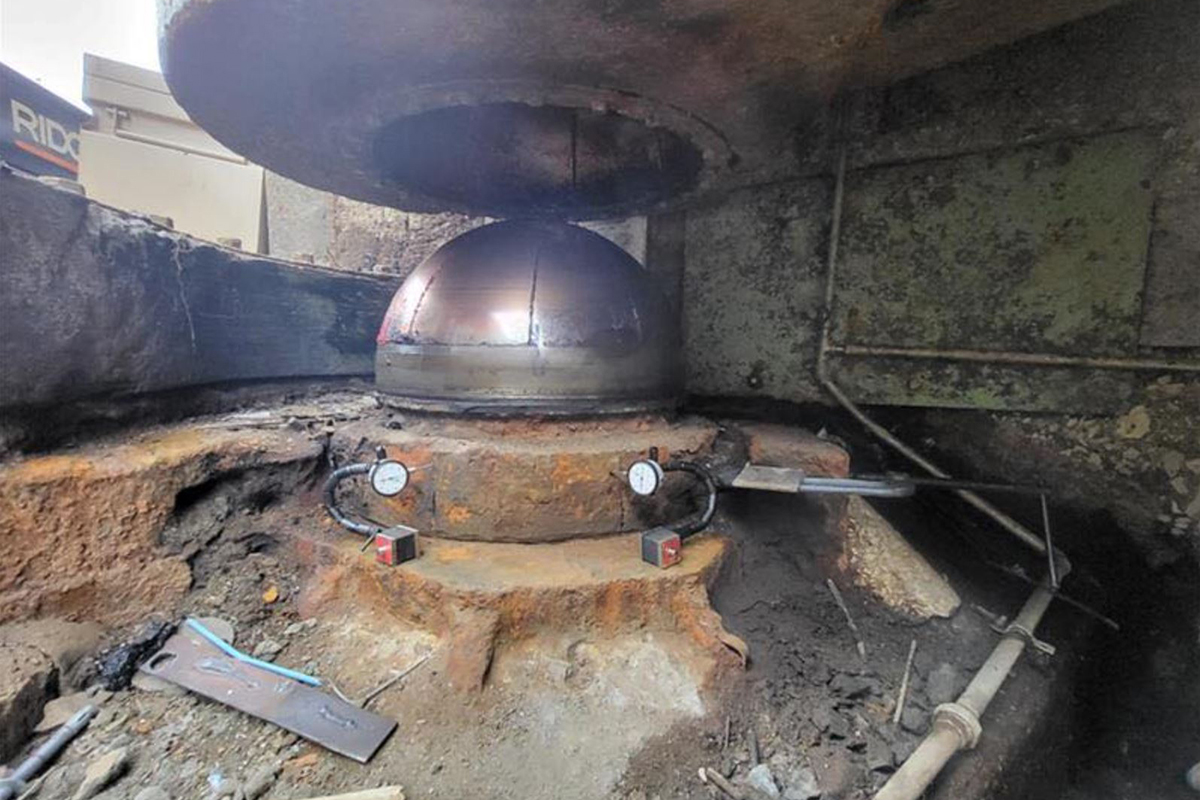Heavy Rains, Repair Challenges Delay Wilson Lock Reopening
The opening of the main navigational lock chamber at Wilson Locks and Dam has been delayed by approximately three weeks, until early July instead of June 14.
The Nashville Engineer District announced the delay during an industry call April 22, attributing it to a combination of weather delays, technical challenges and the sequencing of repair work. The lock, located at Tennessee River Mile 259.4 in Florence, Ala., has been closed since September 25.
Brian Mangrum, chief of the district’s technical support branch, said the new project completion estimate is “more of a broad target than a specific date that we have had previously.”
Crews spent their Easter Sunday, April 20, using hydraulic jacks to lift and secure both of the downstream miter gates, which weigh an estimated 650 tons each. Jacking the gates exposed the cracked pintle assemblies that must be replaced. Crews then removed the pintle ball and base, which will be delivered to the TVA Power Service Shop for measurements and final machining of replacement components.

Along the way, crews disconnected the final gate anchorage components, which had to be carefully and methodically removed from confined areas so they can be reused due to long lead times for replacement. Some components were difficult to remove after being in place for several decades, but the team improvised and was able remove the components out without damage, Mangrum said.
“We’re making some good progress this week on site there since we were able to get back into production, completing some very difficult tasks,” he said.
Heavy rains in late March elevated the river downstream of the dam, where the Corps installed a caisson to keep water from entering the lock. The tailwater nearly overtopped the caisson several times over the past few weeks and led to personnel and equipment being evacuated.
Mangrum said crews lost several days to weather in the first high-water event and another week during the most recent event, along with a couple of other days intermittently due to lightning or high-wind conditions during which cranes could not be operated.
With all contingency days included in the schedule already used, any future weather will result in additional delays, which is likely given typical spring weather and with close to two months remaining in the project schedule, Mangrum said. It also took longer than anticipated to install gate lifting guides and support devices, Mangrum said. Crews had originally planned to apply a ceramic coating to make repairs to quoin blocks concurrently with other work, but the team determined that work should come later in the schedule.
“That requires the gates to be operational and therefore cannot be completed until the gates are reinstalled,” Mangrum said.
All remaining work consists of “critical path” activities in which the start of the next activity is dependent on completion of the previous one, Mangrum said, so any delays during the remaining construction period will continue to adversely impact the project schedule.
Mangrum continued to stress that repairing Wilson Lock is a national priority for the Corps of Engineers, along with the safety of employees and all those who will use the lock.
He said, “The team is continuing to explore every opportunity to expedite our work when we can in a safe manner.”



